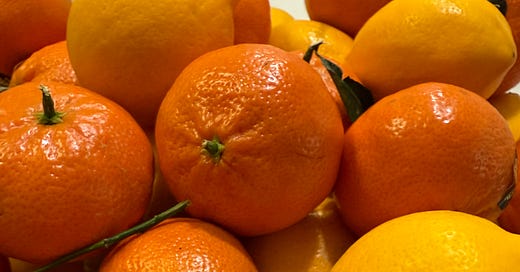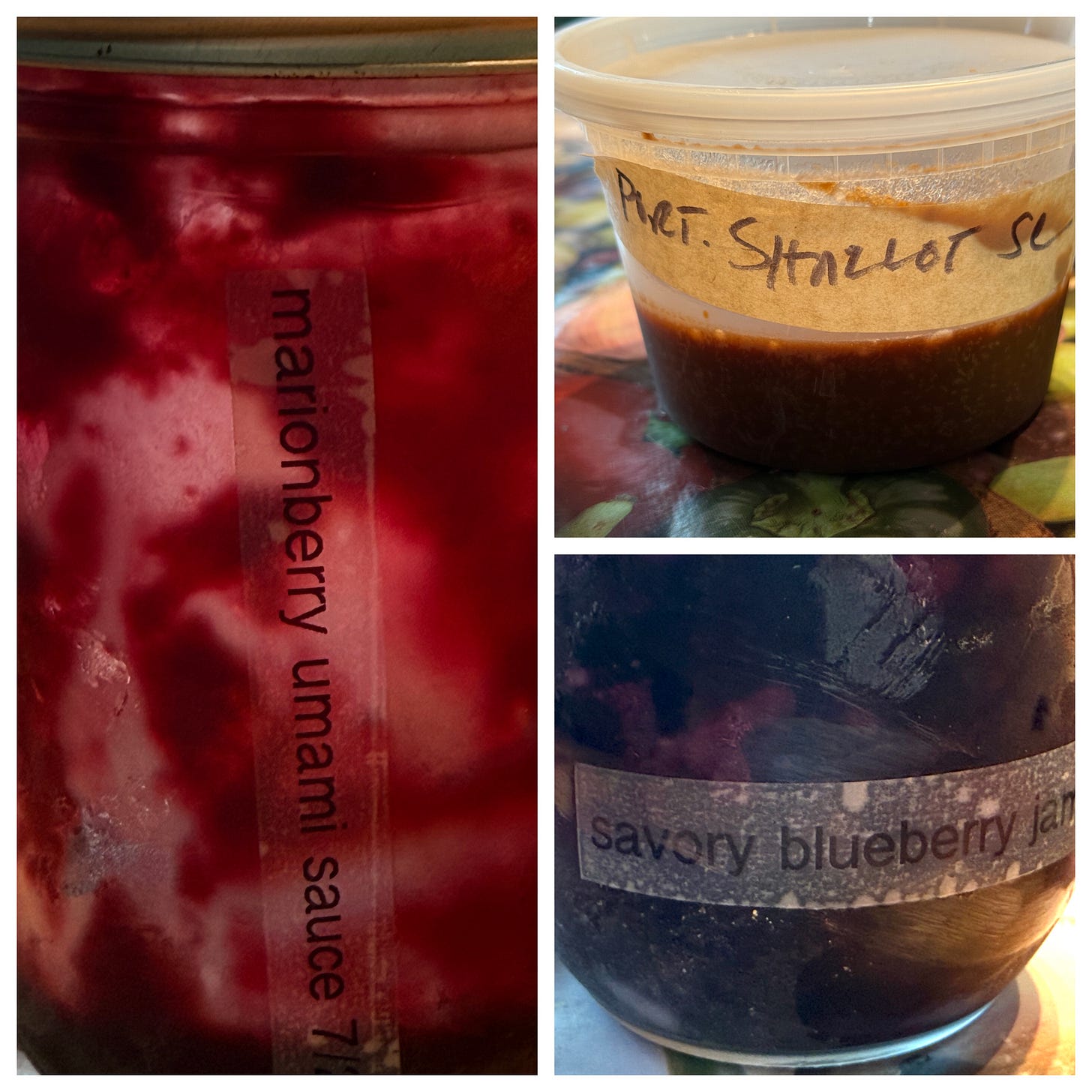TASTE Accoutrements Flavor Lab
Lemon Chutney - Nectar of the Goddess | How Sweet-[Tart] it is!
In 2015 as an “encore career” pastry chef straight out of the Oregon Culinary Institute, my nightmare dream job began, and so commenced my education in the hospitality industry.
The full responsibility of delivering distinctive, original Italian desserts every day in a casual-elegant Italian restaurant sunk in quickly, and it was terrifying. Who on earth could process all the responsibilities, and how could they possibly be made to happen?
The only way the pastry-dessert function happens in a restaurant is through precision execution, not just of the desserts, but of myriad individual components - sauces, fillings, cake slices, specialty doughs, sweet and savory tart ingredients, cookies, biscotti, candied nuts, spiced fruit, confections for the retail case, plus a daily frutta (fruit) special dessert, a book club luncheon menu, and bread preferments (poolish, biga, sourdough leavening) for special breads like brioche. Plus restaurant catering events, in-house and off-site. Every day.
Furthering the complexity, each component, each dessert, each confection has an imposed shelf life, a hard date past which the ingredient cannot be used or the end product cannot be sold. Quicky, one realizes any ingredient or product waste injures restaurant profitability. Accurate labeling is critical to the health and well-being of the restaurant and its guests, and to skillfully negotiating the unannounced health inspection process.
The art of juggling should be taught in culinary school.
Thankfully, the precision mindset of a newbie pastry chef also includes the spreadsheet gene. This was my solution.
“Par” in a restaurant kitchen or bar means “minimum”, the bottom-line quantity of each ingredient or beverage that must be maintained at all times.
As I began feeling my way and having little successes, I dove more deeply into seasonal baking. Q1 is citrus season in both North and South America with specific countries supplementing their local production. California’s Central Valley, for Oregon.
While my pastry and dessert responsibilities were set, I took baby steps into more savory sauces and compotes that either Chef or I could use for, say, charcuterie or cheese boards or accompaniments to certain savory appetizers I made, like Gorgonzola Cheesecake: Marionberry-Umami Sauce. Savory Blueberry Jam. Coffee-Bourbon Sauce, Port Wine-Shallot Sauce. Lemon Chutney.
I remember the horror of tasting raw, unaged Lemon Chutney. I promptly placed it in the reach-in - the open-door glass case attached to the main walk-in - and thought nothing more about it. For months.
When I revisited the chutney - I’m uncertain of just how long it had been steeping, 4-6 months - it was nectar. I believe I referred to it as “culinary alchemy” in my “A Microcosm of the United States” post in February when I again made Lemon Chutney for TASTE | Pacific Northwest subscribers and for our personal use. I set a calendar alert to do a taste test in mid-May.
Our comments, as of today:
Noticeably more viscous, a smoother, more coherent texture;
Bright orange: tangy, bitter, sweet;
Bright lemon, a flavor “lift”;
Spicy, warm heat on the middle tongue and back of the palate;
Individual “notes” are now “chords”
In every TASTE Flavor Lab post I’ll offer many flavor affinities for each primary ingredient. Flavor affinities for citrus:
Lemons: (tart): basil, coriander, cumin, dill, garlic, ginger, honey, lime, mint, miso, mustard, olives, onions, orange, oregano, paprika, parsley, black pepper, rosemary, shallots, sugar (brown, white), tarragon, thyme, vanilla, vinegar.
Oranges: anise seed, basil, cardamom, chili pepper flakes, chiles (warm), chives, cilantro, cinnamon, citrus!, cloves, coriander, cumin, fennel, garlic, ginger, honey, mint, miso, mustard, olives, onions, parsley, black pepper, rosemary, sage, scallions, shallots, soy sauce, star anise, sugar (brown), vanilla, vinegar.
The Lemon Chutney recipe is easy, and any procedural instruction is in the recipe. You needn’t wait for the Q1 citrus season. The wide availability of high quality citrus means you can make it - and have it - anytime of year.
As a reminder…
Free subscribers have access to all the free recipes published during the current calendar year.
All prior year recipes and the complete TASTE | Pacific Northwest newsletter archive are available only to paid subscribers. The 2024 recipe index is coming soon!
Recipe creation, product development and food writing are some of the skills of a professional chef. Substack offers a unique platform to its food community: subscribers have the selective opportunity to pay for what they know has value in their lives.
Creating a library of free content is a service to our readers. Our intent is to imbue each of our reader’s lives with a spirit of inquiry and to infuse it with a bit of joy.
We hope to attract readers who feel our work has value and are willing to pay for that value.
As a writer dedicated to offering what I most love in the world to you, my audience, I fulfill how I choose to work in the world. I choose to bring my professionalism, my dedication to quality, my acquired skills, my creativity, my best advice each day.
Being a chef and food writer is my job.
I don’t write for an algorithm; I've chosen to be part of the Substack community where relationships are built, where authenticity is rewarded, and where community matters.
Being paid for my business, my life’s work, is a step I hope you’ll consider.










The ingredients called for both lemons and mandarin oranges, but the directions only mention the lemons. Can this be made with only lemons? What if you were to freeze the jars rather than water bath canning them? Because of my disability, it’s difficult for me to be lifting jars in and out of a water bath. I totally want to make this.
Can’t wait to try the lemon chutney! We have so many lemons on our two trees 🍋